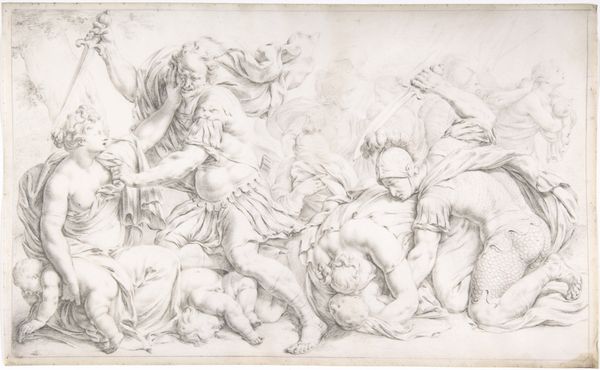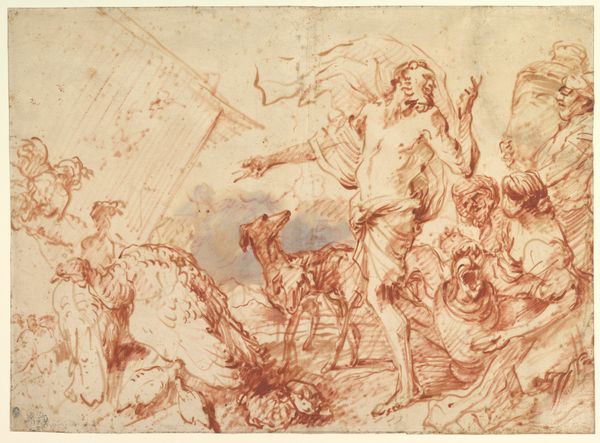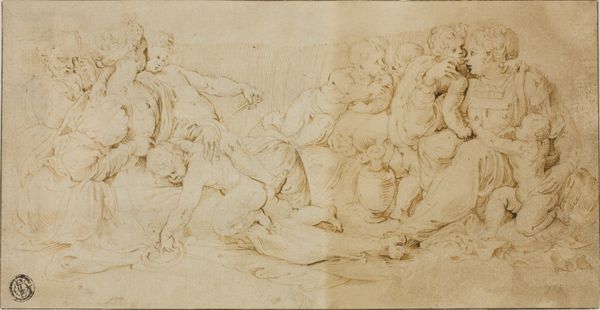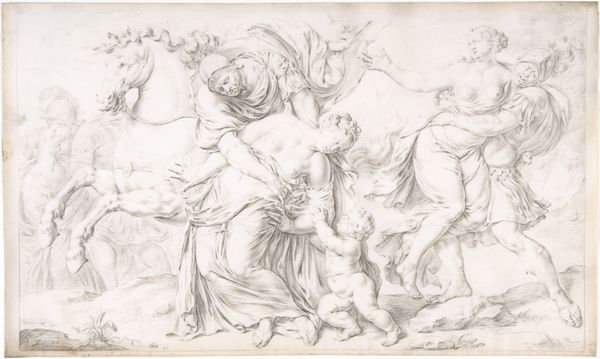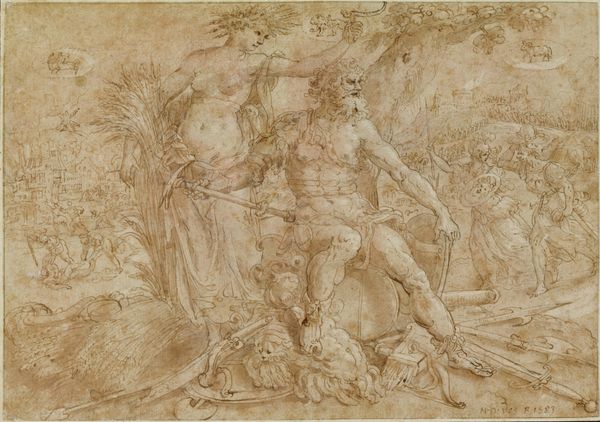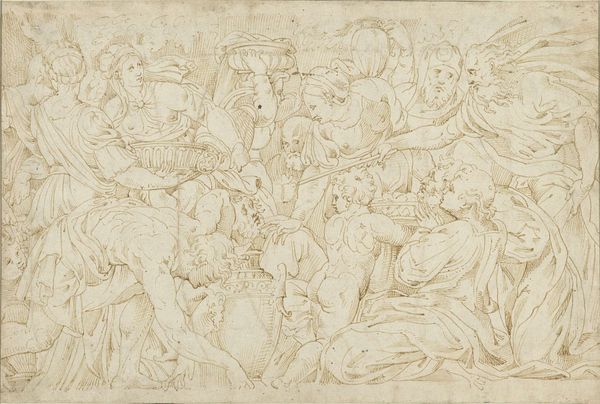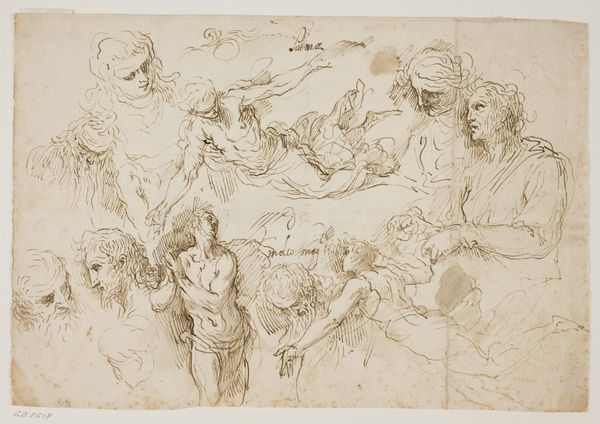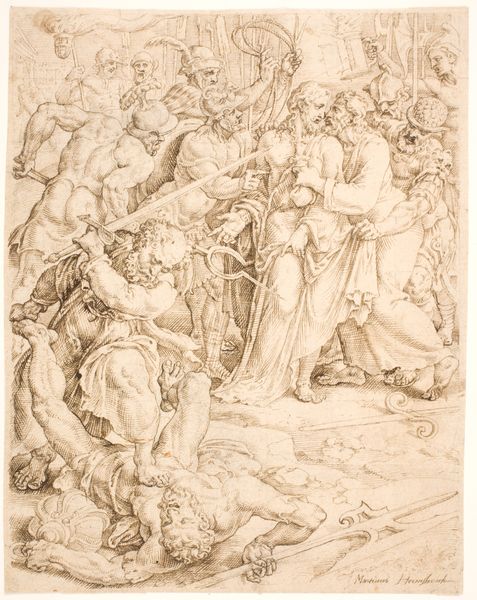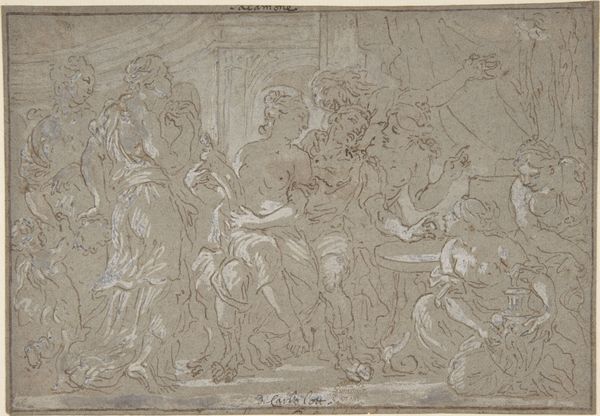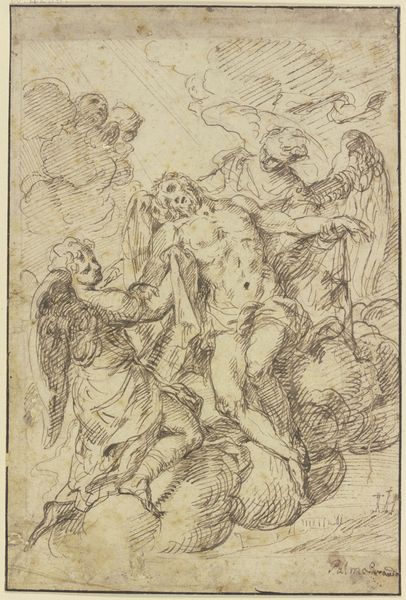
drawing, paper, ink
#
drawing
#
baroque
#
ink painting
#
etching
#
figuration
#
paper
#
ink
#
history-painting
Copyright: Public Domain
Editor: So, here we have "Arguing Philosophers" by Salvator Rosa, created with ink on paper. There’s a lot of… intensity in this drawing, with all these figures gesticulating. How do you interpret this work? Curator: Well, it’s crucial to understand Rosa's socio-political context. He was operating in a time of upheaval, deeply affected by both the remnants of feudalism and the early stirrings of revolutionary thought. I don't see simply "philosophers arguing," but a coded representation of dissenting voices grappling with power. The very act of depicting debate becomes an act of resistance. Notice how some figures dominate the space, while others are literally at their feet. Who do you think these figures represent, in terms of social hierarchy? Editor: It's interesting to think of it as resistance… Maybe the figures at the bottom represent the common people challenging authority? Curator: Precisely! And it’s also key to acknowledge that Rosa's work comes to us through the lens of a patriarchal society. Are there voices missing here? Who isn't represented in this debate? Consider how that absence shapes the narrative. Editor: Of course, there are no women depicted… So it presents only one facet of philosophical arguments and social critique. That changes everything. Curator: Indeed. By understanding the power structures both within and surrounding the image, we can engage more meaningfully with Rosa's artistic intentions. It allows us to have a discussion of both historical context and today’s social issues. Editor: I never would have considered the under-representation in this work on my own; thanks, that was great. Curator: And by asking critical questions like that, you begin to truly excavate the deeper layers of meaning within the art.
Comments
No comments
Be the first to comment and join the conversation on the ultimate creative platform.

